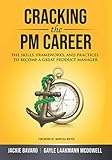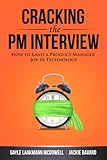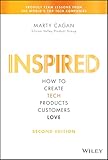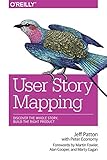Building products
emotional intelligenceFrom creating a vision that inspires to laying out the strategies to get there, product work requires a range of skills—and a good dose of creativity. Putting the puzzle pieces together is essential to creating a product that appeals to its customers. With the right combination of vision, strategy, product design and execution, anyone can create something truly remarkable. With this in mind, let’s start building the future we want to create!
- Product Work
- Roadmapping and User Story Mapping
- Concepts
- Business and Funding Models and their impacts
- Business and Funding Models and their impacts
- Revenue Models
- Flywheels
- Misc
Product Work
Product Vision - The future you want to create
Vision should be inspiring! Strategy should be focused.
Top recruiting tools, motivate folks to come to work daily. Everyone wants to work on something meaningful. Don’t know if, or how, you’ll deliver the vision, but you should believe it’s worth doing!
- Start with why
- Focus on the problem, not the solution
- Think really big
- Be OK disrupting yourself
- Inspire
- Embrace relevant trends
- Skate to where the puck is heading
- Stubborn on vision, flexible on details
- Realize it always is a leap of faith
- Evangelize continuously
Sharing your thinking/approach
- Connect work to goals
- Don’t hide constraints (no designer/no eng/xyz)
- Show decisions by laying out your insights and reasoning
- Partner with designer and other stakeholders
Product Strategy - Path to get to the future
Vision should be inspiring! Strategy should be focused.
Pleasing everyone pleases no one. So this is where we decide what we’re going to do next. It’s the sequence of products or releases to get to our vision.
- One target market or persona at a time
- Needs to align with business strategy
- Align with sales and go-to-market strategy
- Obsess on customers not competitors
- Make sure all partners know your strategy
Product Discovery (Solving the big risks)
The key of product discovery framing is:
- Team is in sync on
- The objective,
- Problem we solve for the customers,
- which target is the customers
- How to know if we succeeded.
- These are connected to the KPIs
- The big risks are identified and tackled
- Customer Risk - Will the customer buy it?
- Usability Risk - Can user figure out how to use it?
- Feasibility Risk - Can we build it?
- Business Risk - Does this work for our business?
NOTE: The goal is to focus on the customer’s problem that is constant; the solution varies with the iterations
Some things as you try to eliminate these risks
- Customers (and execs) can’t tell you what to build
- Most important thing is to provide value
- User experience is usually harder than the engineering process
- Design/Tech/Function is intertwined
- Many of our ideas won’t work and we require iteration
- Must validate our ideas on real users
- Goal is to validate as cheaply as possible
- Validate business value during discovery, not after
- Share learnings with the team.
Working with Product Design
Product design is critical. Common Failure modes:
- PM tries to draw products themselves. Eng needs product design, you draw wireframes, eng builds, and makes up the design themselves
- PM doesn’t provide designs, just stories, again eng makes up product design themselves
- You create interactive design, then hire a contractor to draw themselves
Optimal, having a designer:
- Do what is required to have them sit with you
- Include design from start of all ideas
- Include design in as many customer and user interactions as possible
- Don’t give the designer your ideas, let them solve the problems themselves.
- Let designer iterate as much as possible.
How to prioritize your market
- Market Size - TAM
- The go-to-market plan for the segment (sales channel, advertising method, CAC)
- How long to build - Time to market
Evangelism - How to sell the dream
- Use a prototype
- Show customer pain
- Repeat the product vision and the strategy
- Give lots of credit to all
- Give a great demo
- Be an expert on the domain (competitors, customers)
- Be excited - Enthusiasm is contagious
- Spend time with the team - Every single person, makes a very big deal.
Roadmapping and User Story Mapping
What’s a story map
Concepts
Stated vs Revealed Preferences
A critical concept from behavioral economics that every product manager must understand. Stated preferences are what customers say they want, while revealed preferences are what their actual behaviors show they value.
Why this matters for product work:
- Customer interviews can be misleading if you only listen to stated preferences
- Users often don’t know what they actually want or need
- Past behavior is the best predictor of future behavior
- Features that sound good in surveys may have poor adoption
In practice:
- Focus on observing actual user behavior over survey responses
- Ask about specific past actions rather than hypothetical future intentions
- Look at usage data, not just feature requests
- Test with real behavior, not just stated interest
Examples:
| Domain | Stated Preference | Revealed Preference |
|---|---|---|
| Health | “I want to floss daily” | Dental visits show most people don’t floss regularly |
| Customization | “I want more customization options” | Usage data shows users rarely change default settings |
| News feeds | “I want chronological/time-ordered feeds” | Users spend more time on relevance-ordered algorithmic feeds |
| Social media | “I want less addictive social platforms” | Users consistently choose the most engaging/addictive platforms |
Engagement vs Growth
- Growth is getting new users - New entry points, advertising, etc - DAU/WAU/MAU
- Engagement - Getting existing users to have more value - Sessions/Usage/Time
DAU is retention and new users
- Recall DAU needs new users and returning users. New users vs retention likely matters in a
Gamification - Duo Playbook
From Duolingo: $12B gamification design playbook
-
Streaks as Motivation: Duolingo uses streaks to encourage daily practice. Users are motivated to maintain their streaks, which reinforces consistent learning habits. This feature has significantly boosted user retention, with a 14% increase in day 14 retention rates.
-
Leaderboards for Competition: By incorporating leaderboards, Duolingo taps into users’ competitive nature. This feature not only motivates users to improve their language skills but also fosters social interaction and community engagement.
-
Badges for Achievement: The badge system rewards users for reaching milestones, enhancing their sense of accomplishment. This has led to a 116% increase in user referrals, as users are eager to share their achievements with friends.
-
Instant Feedback for Growth: Duolingo provides immediate feedback on exercises, allowing users to learn from mistakes and progress quickly. Positive reinforcement through sounds and tips enhances the learning experience and keeps users engaged.
-
The Mascot’s Personal Touch: Duo, the green owl mascot, adds a personal touch to notifications, making them feel friendly rather than intrusive. This approach has resulted in a 5% rise in daily active users.
-
Progress Bars for Visual Motivation: Progress bars show users how much they have learned and what remains, motivating them to complete lessons and advance through levels.
-
Gamified Challenges and Events: Duolingo regularly hosts challenges like the “XP Ramp Up Challenge,” creating urgency and excitement among users to participate and earn rewards.
-
Social Features for Community Building: Features like the Friends Quest encourage teamwork and shared goals, fostering a sense of community and collaboration among users.
-
Theme-Based Learning for Engagement: Courses are grouped by themes (e.g., greetings), providing context and making learning more relatable and enjoyable.
-
A/B Testing for Continuous Improvement: Duolingo employs extensive A/B testing to refine its gamification strategies, ensuring that features effectively enhance user engagement and retention.
-
Scarcity and Exclusivity: Features like exclusive clubs create a sense of scarcity, making users feel special when they unlock certain achievements or levels.
Business and Funding Models and their impacts
Venture Capital = Growth Models
- Only suitable when you are in a winner take all market like social networking
- Growth above all else
Lifestyle Business
Primary Objective: To create a sustainable income that supports the owner’s desired lifestyle rather than pursuing aggressive growth or scaling.
A lifestyle business is an ideal choice for entrepreneurs who prioritize autonomy, sustainability, and alignment with personal passions, rather than maximizing growth or preparing for an exit.
Business and Funding Models and their impacts
Venture Capital = Growth Models
- Only suitable when you are in a winner take all market like social networking
- Growth above all else
Lifestyle Business
Primary Objective: To create a sustainable income that supports the owner’s desired lifestyle rather than pursuing aggressive growth or scaling.
A lifestyle business is an ideal choice for entrepreneurs who prioritize autonomy, sustainability, and alignment with personal passions, rather than maximizing growth or preparing for an exit.
Revenue Models
Advertising Model
Merch
Affiliate Model
Consumption/Pay Per Use
Subscription Model = Recurring Revenue Model
Primary Objective: To establish recurring revenue through subscriptions, where customers pay regularly for access to products, services, or content.
Key Characteristics:
Customer Retention: Focus on building long-term customer relationships and retention, reducing the need for continuous new customer acquisition. Predictable Revenue: Provides a stable cash flow, allowing businesses to plan and grow more consistently. Value-Based Pricing: Often includes multiple pricing tiers, with features that increase customer engagement and perceived value. Potential Impacts:
Pros: Ensures a steady revenue stream, high customer lifetime value (LTV), and better cash flow management. Cons: Requires continuous innovation and value delivery to retain customers, high initial acquisition costs, and potential churn if engagement declines.
Flywheels
Huh, GPT is writing these
Sharing Flywheel
A Sharing Flywheel is a model or concept used to encourage the sharing of a particular piece of content with the intent of increasing its visibility and engagement. The basic idea is that if one person shares it, their followers or friends may reshare and repost the content, creating a “flywheel” effect where the content is shared and reshared in a cycle. By creating an environment where the content can become viral, more people will be exposed to it, which can lead to more engagement
Content Consumption Flywheel
A Content Consumption Flywheel is a type of content marketing strategy in which a company or organization encourages their customers and followers to consume content in an ongoing cycle. This strategy encourages customers and followers to consume content consistently, often on a regular basis and
Misc
Notes from the goal
The goal is a book that was mandatory reading for amazon executives… Might be worth its own page
3 Areas:
- Making Money - Whatever your output goal is. Though usually, you move an input goal.
- Inventory - Stuff that’s required to meet your goal, but isn’t sufficient.
- Operating Expense - Any costs.
Note, inventory is output. Not inherently useful. Outcomes is goal!
Differences from an EM
How to interview for customer need - the Mom Test
- Talk about their life instead of your idea.
- Ask about specifics in the past instead of generics or opinions about the future.
-
Talk less and listen more.
- Ask About Specific Behaviors: Instead of asking for opinions about your idea, ask about specific behaviors and actions they’ve taken in the past. This provides more reliable data.
Stated vs Revealed Preferences: Remember that what customers say they want (stated preferences) often differs from what they actually do (revealed preferences). Focus on understanding their actual behaviors and past actions rather than hypothetical future intentions.
-
Focus on Their Life, Not Your Idea: Engage in discussions about the customer’s life and problems instead of pitching your idea. This helps to uncover real issues that your product or service might solve.
-
Avoid Compliments: Disregard compliments; they often don’t provide valuable feedback and can be misleading.
-
Seek Evidence of Customer Pain Points: Look for evidence that the problem you’re trying to solve is painful enough that customers have already tried to solve it themselves.
-
Get Commitment: Try to get some form of commitment from potential customers, whether it’s time, reputation risk, or even pre-purchases.
-
Keep Questions Neutral: Phrase your questions in a way that doesn’t lead to the answer you want to hear.
-
Avoid Bad Data: Be wary of the bad data that comes from questions about hypothetical situations, flattery, and future intentions.
Examples of turning accusatory “why questions” into less threatening data gathering questions:
- Bad: “Why didn’t you like our product?”
- Good: “What were you hoping to achieve with our product, and how did it fall short of those expectations?”
- Bad: “Why aren’t you using the feature we built?”
- Good: “Can you walk me through a recent time when you considered using the feature and what your thought process was?”
- Bad: “Why do you think people will buy this?”
- Good: “What kinds of problems have people encountered that might lead them to look for a solution like ours?”
- Bad: “Why do you prefer our competitor’s product?”
- Good: “What aspects of our competitor’s product made a difference in your decision to use it?”
- Bad: “Why haven’t you tried solving this problem before?”
- Good: “What has prevented you from addressing this issue until now?”
- Bad: “Why would you pay for this service?”
- Good: “Can you describe a situation where you felt this service would be worth paying for?”
- Bad: “Why do you find this task difficult?”
- Good: “What challenges do you face when you’re trying to accomplish this task?”
- Bad: “Why do you like this feature so much?”
- Good: “What specific benefits do you get from this feature that you value the most?”
- Bad: “Why don’t you track your expenses?”
- Good: “What has your experience been with tracking expenses, and what has made it difficult or unappealing for you?”
- Bad: “Why do you need this solution right now?”
- Good: “What has changed recently that has made finding a solution like this more urgent for you?”




